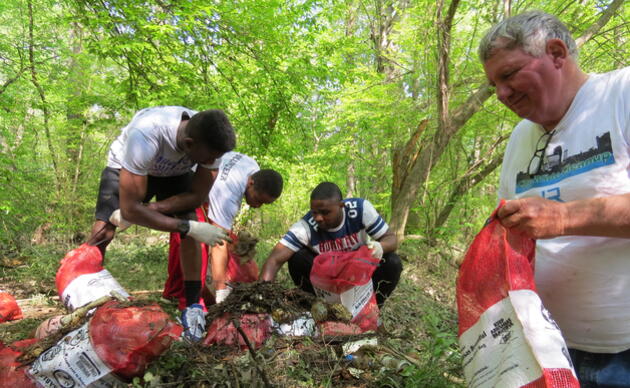You know this shrub as Nandina, Sacred Bamboo or Heavenly Bamboo. Nandina domestica is found in most landscaping mixes in yards, parks, hospital grounds, and other locations in the lower 48 states. Its bright red berries and contrasting dark green foliage add color and texture to landscapes. Some homeowners plant Nandina to specifically to provide food for birds, including the Cedar Waxwing, American Robin, Northern Mockingbird, Eastern Bluebird and other birds that depend on winter fruits to survive. Nandina berries last for months, attracting hungry birds when food is in short supply. However, studies show planting Nandina does not help birds, it harms them.
When dozens of Cedar Waxwings were found dead in Thomas County, Georgia, researchers at the College of Veterinary Medicine, University of Georgia, found the cause to be Nandina berries. Read their report. All the birds had intact Nandina berries in their crops. There was hemorrhaging in the heart, lungs, trachea, abdominal cavity and other organs.
Nandina berries contain cyanide and other alkaloids that produce highly toxic hydrogen cyanide (HCN) which is extremely poisonous to all animals. Sudden death may be the only sign of cyanide poisoning and death usually comes in minutes to an hour.
The U.S. Department of Agriculture and most states classify Nandina domestica as a noxious, non-native, invasive weed from China and Japan. It has naturalized and invaded our national parks, national widlife refuges, national forests, city parks, and other habitats throughout the U.S. Yet homeowners and commercial landscapers are still planting this toxic species without constraint. In addition to bird deaths in Georgia, bird deaths have been reported in Houston and other parts of the country. Hydrogen cyanide is a painful and unnecessary way for birds to die. Nandina is also toxic to dogs, cats, and many other animals.
You can help by choosing to remove Nandina and plant natives in your yard. If you don’t want to rip out your Nandina, please prune the berry laden branches.
Posted with permission from Jerry W. Davis, Certified Wildlife Biologist, Hot Springs, AR.
Recommended native replacements for Nandina:
Possumhaw (Ilex decidua)
Highbush Blueberry (Vaccinium corymbosum)
American Beautyberry (Callicarpa americana)
Eastern Wahoo (Euonymus atropurpureus)
Virginia Sweetspire (Itea virginica)
Arrowood Viburnum (Viburnum dentatum)
Strawberry Bush (Euonymus americanus)
Spicebush (Lindera benzoin)
Red Chokeberry (Aronia arbutifolia)







